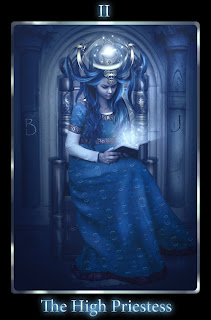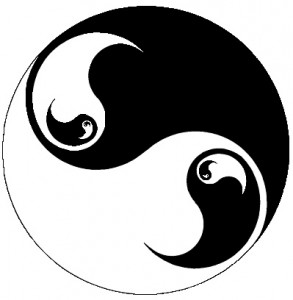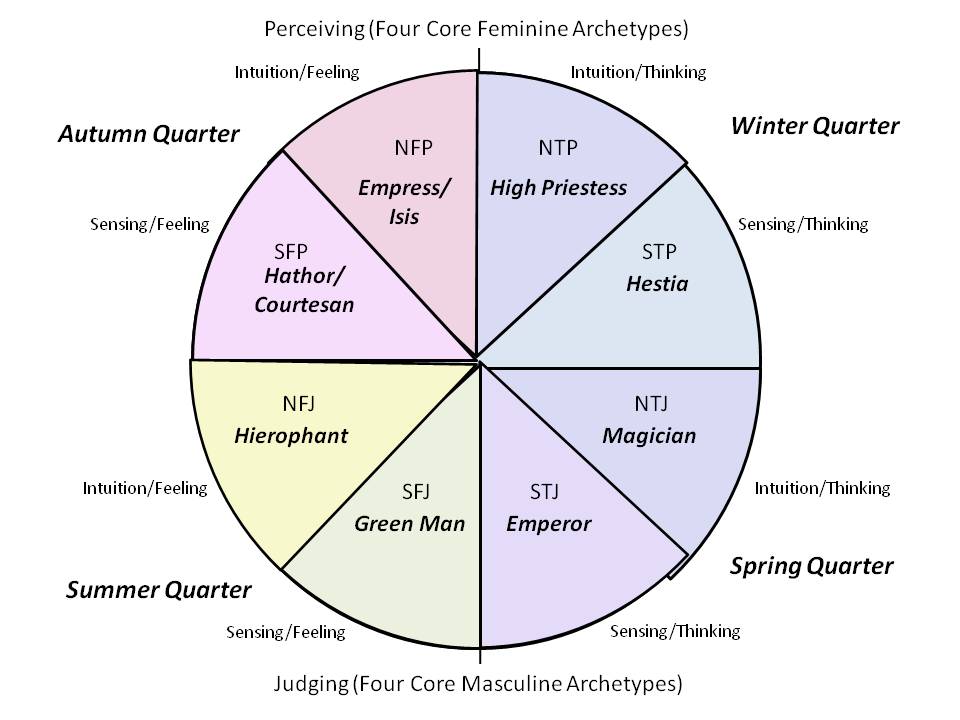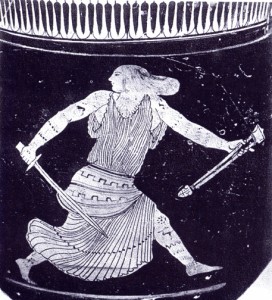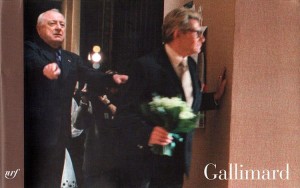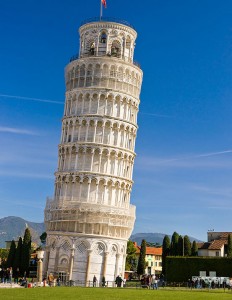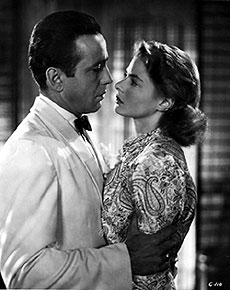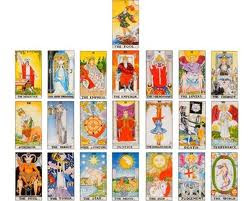Beyond December 21, 2012: The Next 60 Years
For the past half-year, this blog has had a strategic direction. We are leading up to – and pointing the way beyond – the much anticipated “2012 Transition.”
And as we move towards that time, anticipation and curiosity mounts. Will we wake up on the morning of December 22nd to find that the world has irrevocably changed? Will we wake up at all? Or will we get into our cars or take our “usual” route to work, stop by our “usual” favorite place for morning coffee, and have a big laugh? The “2012 Transition?” we might say to each other. “It was all a big joke, wasn’t it? Like the Y2K ‘crisis’ – remember that? All ‘much ado about nothing.’ Life goes forward.”
Or will we say something in a similar vein, but have our words mask a fear-bordering anxiety. A sense of unease, as when horses send a blizzard coming down off the plains. We’ll feel an instinctual, primal urge to find a “safe place” in which to hide – but have nowhere to turn. We’ll continue reading the news, listening to our favorite pundits on TV, picking up the Twitter feeds and the Facebook links. And all of the news will converge into our heads to give us just one clear message: A crisis is coming.
In fact, that crisis is already here.
The question is: What sort of crisis? How big? How difficult?
Will we survive? If so, in what form? And what do we need to do now to prepare?
Now’s my time to “come clean” with you. I am proposing answers. But I’m not proposing “easy answers.” It’s not that I’m “middle-of-the-road” in terms of what I believe will happen, but I’m being very careful about what it is that we need to do about not only what is going to happen, but also what is happening right now.
These “not-so-easy answers” are based not on one specific area or another. So I’m not going to propose a “financial survival plan,” nor a “head-to-the-hills” approach. Nor am I going to be totally “New Age.” Yes, we’re having a “singularity.” (See work by early proponent Ray Kurzweil.) Yes, we are at a culminating point in human experience. And yes, there are a whole lot of “strange things” going on – in our lives, in the world around us – that are not part of our “normal” expectations and experiences.
But I’m not going to go all “woo-woo” on you either.
Where we are at – where we are precisely at – in human experience – is a Tower moment.
Take a look at these images. First, our recent past.
Photograph by Spencer Platt, Getty Images
Perhaps no images in the last dozen years more succinctly capture the opening of this millenium than the destruction of the “twin towers” of the World Trade Center on September 11, 2001.
Now, a visual image describing a point in human evolution – both individual and species-wide.
The Tower card – Major Arcana XVI – from the Rider-Waite depiction.
The Tower image is deeply embedded in our cultural mythology. Specifically, we have a culture-wide deep-felt resonance with the “destruction of a tower” as signifying the fall of everything from a civilization to a person.
In Unveiling: The Inner Journey, I depicted the Tower role in our lives as when we suffer loss of everything that defines our ego. Most importantly, according to Tower imagery, this loss is not of just one thing. It is when we lose everything all at once. We lose our job, and the same week, the doctor diagnoses us with breast cancer. Or our husband files for divorce so that he can move in with his mistress, and our company is bought out by a mega-conglomerate – with impending re-organizations and layoffs. Or we realize that we need to move our mother into a nursing home – and take over storing and processing her “worldly goods,” while at the same time our son is diagnosed with ADD and needs extra tutoring and attention.
A Tower moment is when it all comes apart, all at once.
We have them in our lives. I’ve had multiple ones (described in Unveiling).
Now, here’s the important point: One that I didn’t make in Unveiling.
Humans have Tower moments, and so do societies. And humanity itself is now in the midst of a Tower moment.
If a Tower moment is defined as the conflux of multiple devastating challenges, all at once, we now have a Tower squarely and firmly on our hands.
Because it’s not just one thing.
It’s the conflux – the simultaneous flowing together and cresting – of our oil/energy crisis together with the population boom. We’re running out of the oil that we use for fertilizers and cheap food transport at the same time that we’re in the midst of an unprecedented population surge, anticipated to go to 9B people in the next several decades.
Oil and Population graph by Paul Chefurka, Population, The Elephant in the Room.
We have a built-up world-wide financial crisis just as we’re having increased financial challenges to deal with climate and ecological disasters. And we are certain that the horrific BP Gulf oil spill is just one of many such challenges that we’ll be facing; as we go after more and more “difficult-to-recover” oil, and rely more and more on other sources – including nuclear – we’ll have more energy-based accidents. Chernobyl and Fukushima were just the beginning. There will be more.
And the biggest point that I’m making here? It’s not just the ecological devastation. It’s that cleaning up after these massive ecological devastations will be necessary. And very, very expensive. And that will be occurring just as we need to rebuild port infrastructures and port cities, as the climate shifts and the oceans rise.
And we’re going to attempt to do this as the greatest money-generating generation of this country moves from generating money to taking money. The Baby Boomers are starting to retire. They’ll want Social Security and Medicare. Their retirement savings were largely wiped out by the 2008 financial debacle, and they’ll be needing help – instead of providing an income base to support large-scale clean-up and climate adaptation efforts.
And I haven’t even mentioned the social retooling that we’ll need as transportation costs rise, and it is more and more costly to commute to work, to take vacations, even to go to the grocery store. (Where everything is going to cost more, anyway.)
And also, I haven’t yet mentioned the near-certainty of massive plagues, unleashed with new, antibiotic-resistant bacterial strains and new viral combinations.
This is a Tower time for humanity.
Most of us keep trying to move forward with “life-as-normal,” hoping that someday soon, we’ll get back to “normal.”
My point is that there is no longer any “normal” that we can go back to.
The era of Norman-Rockwell-images – of comfortable family homes with the white picket fences and stability for everyone – is in the past. It won’t come back in our lifetime, or in the lifetime of our children. In fact, it won’t be available for our children’s children either.
We’re in the midst of a profound shift, and there’s no “normal” that we can go back to anymore.
But there is a “word of hope”; for us as a society – and as a race of human beings. And for each of us, individually, as well.
The “word of hope” is that there is something that lies beyond the Tower.
In this blog, I write about human experience – both individually and society-wide – using analogies and stories. I write using archetypes and metaphors. And fortunately (for all of us), I haven’t had to invent the storyline. (In my “sister” blog, I write from the non-linear complex systems perspective.)
The “storyline” was given to us several thousand years ago, in the form of the Kabbalah. This depicts the realms of consciousness; essentially a path towards God-realization. That’s why the Kabbalah has been studied by mystics for many centuries. (Jesus Himself very likely knew and understood the Kabbalah, together with his role in Kabbalistic terms. Another blogpost, another time.)
The Kabbalah lays it out for us. It presents the “created world” using the analogy of the Tree of Life. (See the picture to the left.)
The “centers” of this Tree are states of consciousness. The “pathways” connecting the Tree correspond to the Tarot’s Major Arcana. And also (not so coincidently) to the pre-Phoenician alphabet, which later became the Phoenician, which laid the groundwork for the 22 letters in the Hebrew alphabet.
The Kaballah shows the course of evolution – both of the individual person, and of humanity overall. So people individually go through Tower moments, and survive. (I have, and you have probably done so, also.) Civilizations go through Tower moments. And now, humanity itself is in the midst of a Tower; very likely the greatest Tower time in the history of humanity.
What brings us hope is that there actually is a “step beyond.” It’s called the Star.
The Star card – Major Arcana XVII – from the Rider-Waite depiction.
Calm, lucid, clear. We get wisdom. Our life – what once was – is in shambles around our feet. But we’re still here. And without the need to preserve something that no longer serves its purpose, we are free to receive insight and wisdom. It’s as though we are naked in the world once again. However, we are naked in the midst of the flowing waters of life. We have all that we need, and more.
And beyond the Star, we have the Moon (bringing to awareness all the gifts of our intuition and subconscious awareness), and the Sun (energy, blessings, abundance). From this holy and wonderful moment, we rise in response to the Judgment call. But rather than being harshly judged, this is truly the moment when we joyfully respond to a literal “higher calling.” We “rise up” beyond ourselves. We become that which we were meant to be.
And finally, one step beyond, we are united with God, in a flowing, ecstatic dance.
This, my friends, this dance-with-God, this joyous realization of the divine spark within ourselves, is what our human experience is meant to be.
And if we have to go through a Tower moment to get there, then so be it.
We’ll do this, and we – as humanity – will survive. Not necessarily each one of us individually, but as a species, yes. We’ll survive. But we’ll survive transformed. We’ll survive as those beings that we were created to be.
Now, to specifics.
We can greatly increase our chances of survival if we do certain things.
This is NOT a prepare-for-a-financial-meltdown missive. Nor is it a prepare-for-the-rapture directive. Nor are we going to find our next evolutionary stage by forming some mental symbiosis with a world-wide network of computers, as was suggested by Ray Kurzweil. (But for a very interesting read, linking to the latest data, visit Going Beyond Moore’s Law.)
Rather, what we must do, if we’re going to get through this Tower, is to evolve ourselves. We’re going to have to let go of that which doesn’t work. (That’s a given; that’s the nature of a Tower time.) But also, we have to get ourselves completely together.
Refer, please, to my previous blogpost on the holographic nature of our archetypal experience. The lesson there (which I’ll develop more over time) is that we’re individually – and collectively – going through all of our archetypal stages all at once. Yes, sometimes one thing is much more pronounced than others. (And right now, for humanity, it’s the Tower.)
But because our lives are holographic right now – and very definitely not linear – we can go back and “fill in” what we’ve missed.
So our first big “life challenge” was archetypal integration. That was realizing and gaining mastery of the six core power archetypes about which I’ve been writing for the past half-year. (I introduced these in Unveiling: The Inner Journey. See Chapters 7 and 11; “A Real Woman’s Path (Really Does Exist!)” and “Shifting State,” respectively.) And while we’re at it, we also need to identify and access our two “reserve” or “battery-pack” archetypes – the ones that we use when we need to rest and recharge. This gives us a total of eight “power archetypes”, which we can map onto the Jungian system.
This is a starting point. And if we have to go back and do some remedial work, we can do this. In fact, as focused and mature adults, if we recognize the need to “fill in a gap,” we can probably do so very expeditiously.
We then have an “integration stage.” Actually, we have two integration stages. And the second integration step, which I’ve just gone through, is like a preamble to the Tower, only in a somewhat lower-key way. (And at that, it’s still a real toughie.) This “second integration step” precedes a sort of mini-Tower; one in which we voluntarily leave comfort, safety, and familiarity in search of wisdom.
The end result? If we go through archetypal access and integration (the First Journey), and then the re-integration and the following steps (the Second Journey), we get to a point at which we start accessing some real internal power and capability. This is the Fountain-of-Youth, or ch’i creation, which I describe in Unveiling. (See Chapter 29: “Pragmatic Esoterics,” as well as chapters leading up to that.)
Once we complete our two Journeys, we have not only “all of ourselves, altogether” (the result of integration and re-integration), but also some real vital raw energy – ch’i – with which to work.
Now unfortunately, there’s one really more scary and horrific step – even before we get to the Tower. This is where we encounter the real nasty, dark, ugly stuff inside. (Think of Debbie Ford’s Dark Side of the Light Chasers. Think of World War I, World War II, and genocidal purges around the world. Yup, been there all along – but a lot of real nasty, truly ugly has come out in the past 100 years.) This is the Devil stage, where we encounter the worst-possible. And the really worst part is that what we truly encounter is that which is inside ourselves.
It is this, of course, that unleashes the Tower. Encountering our own ego – in its worst form – is what brings about the destruction of comfort and removes the illusion of safety.
Pretty awful stuff, indeed. And the Tower time is no fun. Not for us individually, and not for humanity.
But if we can put this in context, we’ll see that it is a necessary step, and a transition to the freedom and joy that we truly desire. We move beyond the Tower, and become that which we were meant to be. And at that moment, each of us will be able to say (taking words from A Course in Miracles), “I am as God created me.”
So with that thought of love and encouragement, let’s move onward. And through.
And for those of you who live in the Northern Virginia/Metro DC area, there will be an absolutely fabulous concert on Saturday, June 2nd, at the Langley High School. Performed by The McLean Symphony under the direction of Maestro Dingwall Fleary with Special Invited Guests, it will feature Beethoven’s Ninth Chorale Finale (the “Ode to Joy”) as its closing piece.
Let’s use this to lift up our hearts and spirits, and gain encouragement for the times ahead.
We can certainly make it through the next sixty years. But a “joyful” heart will help us greatly.

.jpg)
